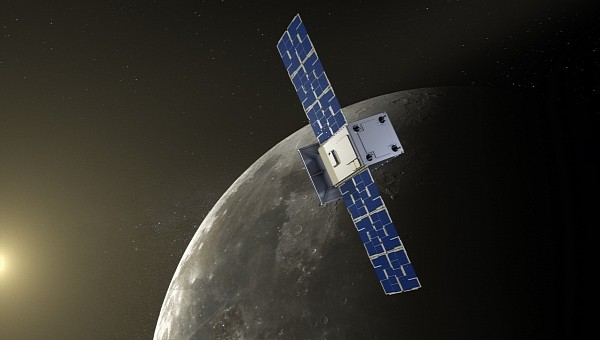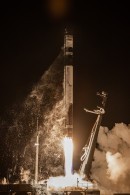Come the not the so very distant future (read, possibly and hopefully by the end of the decade) humanity would have built its very first space station away from the immediate vicinity of Earth. It’s called for now Gateway, it’ll orbit the Moon, and it’ll become one of the pillars of the Moon and Mars exploration efforts.
Gateway should start being put together around the Moon from 2024. It will serve as a sort of a permanent base for astronauts, and a coordination center for what will happen on the surface of the satellite.
Before the first element of the station takes off though, NASA still has some testing of the concept to do. As a sort of tech validator, but also a “pathfinder” for Gateway, the American space agency launched back in June something called Cislunar Autonomous Positioning System Technology Operations and Navigation Experiment.
CAPSTONE for short, the spacecraft, which is nothing more than a CubeSat the size of a microwave oven, took its sweet time getting there, and only entered something NASA calls near-rectilinear halo orbit (NRHO) this Sunday at 7:39 p.m. EST.
NRHO is the same orbit the Gateway will follow, but CAPSTONE is the first-ever spacecraft to reach it. In doing so, the spacecraft also became the first CubeSat to be sent to the Moon.
Now that it has arrived at its destination, the machine “will perform two additional clean-up maneuvers to refine its orbit.” Among the systems being tested are a navigation system meant to determine the spacecraft’s position in relation to the Lunar Reconnaissance Orbiter without using ground stations.
During its mission, CAPSTONE will fly within 1,000 miles (1,609 km) of the Moon’s North Pole. It should stay up there for about half a year, teaching humans back on Earth all about the characteristics of the NRHO.
Before the first element of the station takes off though, NASA still has some testing of the concept to do. As a sort of tech validator, but also a “pathfinder” for Gateway, the American space agency launched back in June something called Cislunar Autonomous Positioning System Technology Operations and Navigation Experiment.
CAPSTONE for short, the spacecraft, which is nothing more than a CubeSat the size of a microwave oven, took its sweet time getting there, and only entered something NASA calls near-rectilinear halo orbit (NRHO) this Sunday at 7:39 p.m. EST.
NRHO is the same orbit the Gateway will follow, but CAPSTONE is the first-ever spacecraft to reach it. In doing so, the spacecraft also became the first CubeSat to be sent to the Moon.
Now that it has arrived at its destination, the machine “will perform two additional clean-up maneuvers to refine its orbit.” Among the systems being tested are a navigation system meant to determine the spacecraft’s position in relation to the Lunar Reconnaissance Orbiter without using ground stations.
During its mission, CAPSTONE will fly within 1,000 miles (1,609 km) of the Moon’s North Pole. It should stay up there for about half a year, teaching humans back on Earth all about the characteristics of the NRHO.






